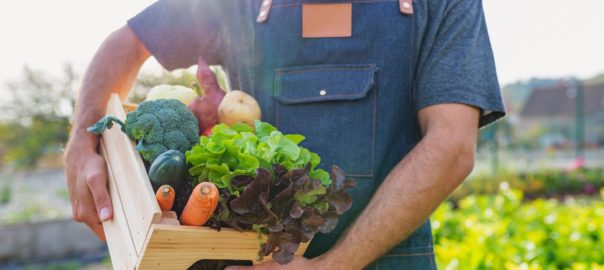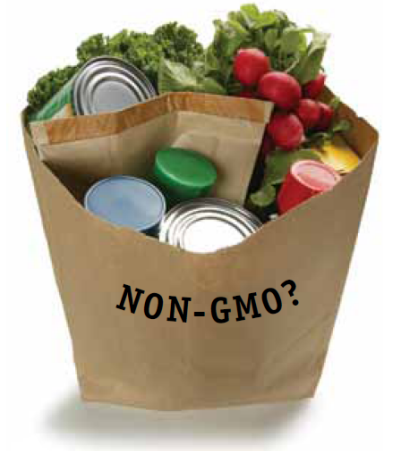This article was contributed by my friend Cindi Hall. We've known each other since way back when, she was one of my first customers purchasing whole ground flours from me and learning how to use them in her kitchen. Over the years she's become a great local advocate for healthy eating and avoiding GMOs. I'm also grateful to say that she's been a huge supporter of the work and writing that I do. She and her family went to Australia earlier this year and she was kind enough to write this article and send these great photos. Sounds like the tucker is pretty good down there.

When my husband decided to attend a conference in Australia, it was the perfect opportunity for our family to travel with him and experience one of the most environmentally friendly places I have seen. As a woman who tries to eat healthy, cares about the environment, and still has the energy to sit through 36 hours of total travel time, it was the vacation of a lifetime.
We had arrived in Sydney early June 2013, the beginning of Aussie winter. The 70 degree temperatures were warmer than I had expected. Sydney seemed to be relatively clean for such a large city. There were recycle cans on the street with the garbage cans, not much graffiti, and a friendliness that I had not anticipated. Being used to the blank stares of New York people, the Aussies look at you and smile when walking the sidewalks of busy Sydney. This alone was such a pleasure.
As we walked in the city towards their famous Opera House and Botanical Garden, I started noticing all the runner/joggers along Circular Quay. It was a beautiful waterfront that had large areas for runners and people passing by or sightseeing as the ferries come in and out.
The Botanical Gardens, which is free for all visitors, was amazing. Among the beautiful trees and shrubs, there were many people walking and running along the paths. I noticed people sitting on the grass, relaxing and eating lunch. I observed their small coolers and brown bags, instead of the McDonald’s and Starbucks you typically see in the US when people dine in a park. I found this interesting. On the other hand, in Australia where a cheeseburger costs around $30, I think I would be brown-bagging my lunch, too.

My family and I did enjoy many meals out and paid dearly for them. However, it was worth every dime to eat such healthy meals. I realized that the menus would have small print by certain choices. Terms, such as “grass fed” and “non GMO,” were prevalent. I thought at first it was just the restaurants we chose or perhaps we were in trendy parts of town.
As we walked through the city and its shopping plazas and malls, I did take note of the food courts. There were smoothie/juice bars in all the malls. Also, they were not the kind of smoothie that is made with red liquid from a box (probably laced with chemicals). I watched as they cut up fresh fruit and placed it in a blender or juicer. As I walked through the food courts, which were much smaller than in the US, there were no fast foods being sold. There were fresh sandwiches, wraps, and salads. Yes, there was the usual Chinese food take-out, but not the usual choices of five fast food places, with their grease and carb-oriented meals.

At one mall, I even spotted a store that sold beautiful fresh fruit and veggies. It was then that I realized something pretty important regarding the Aussie philosophy about health and wellbeing. With their focus on fresh foods and exercise, the people of Sydney could actually eat all those chips (French fries to us here in the States) that are served with each restaurant meal and still not become obese.
We also had the opportunity to fly North to the Rainforest and the Great Barrier Reef. The first place I noticed in the Sydney airport was The Juice Bar. Again, fresh fruit cut up and put through a juicer. Can you imagine seeing that in an airport, of all places?!
Once we arrived at our final destination of Port Douglas where it is warm all year, similar to Florida, I thought it might be a different story. Port Douglas has beautiful, untouched beaches and gorgeous natural areas. The hotels are not allowed to clean, cut back, or trim the plant foliage and trees in any way. They are permitted to have one narrow path from the beachfront hotel to the beach itself, but everything else needs to remain as is.
While walking the beaches, I discovered that they look very much like those on that old TV show, Gilligan’s Island. Large coconuts fall from the trees and drop to the sand. Also, palm leaves and branches rest on the sand where they have landed from previous storms. Then, I began to notice the people in the area. As it was immediately before peak tourist season, it seemed that most of the people there were locals who were running/jogging along the water’s edge. It was a joy to see people out wind surfing, too. Not eating food sold from the beach concession stand, people were out being active as a part of their normal life style. Come to think of it, I never saw any beach concession stands anywhere. That’s a statement about the Aussie point of view in itself.
While in Port Douglas, we did have our share of treats. Being a major chocolate lover, with no apologies to Mira, I had to try their candy. I tried the same brands as we have in the US: Nestles, Cadbury, and M&M’s. However, I did notice the list of ingredients. In the US, we have High Fructose Corn Syrup and many other words I can’t pronounce or will I even try to spell them. Their candy listed natural ingredients: sugar, whole milk, and cocoa beans. Also, I noticed the menus of places we ate, which featured “Grass Fed,” “organic,” and “non-GMO.” I was happy to see these labels pop up and have the choice of eating foods that were not chemically created. What I really enjoyed most was ordering salad. Their salads were so fresh, crunchy, and beautiful . The Australians seem to take care preparing each meal, as if they have special pride in their healthy masterpiece.
Although I love our country, it was such a pleasure to visit the great country of Australia and to experience the Aussie approach to healthy life styles. I have no desire to continue that day and half total travel time on a regular basis, but I would advise anyone thinking of visiting: Save every dime you can and go to Australia. I hope each person who travels there comes home with a bit of that Aussie sense of preserving nature and a focus on getting real food back in our American menus.




















